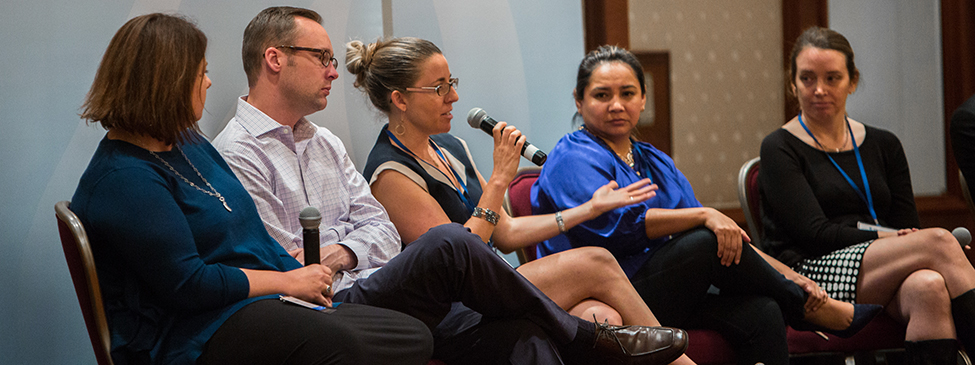If you are reading this blog, you have probably heard of TNTP. And perhaps you are also familiar with TNTP’s President, Tim Daly. But the likelihood that you have come across my name is far less—which might seem odd, given that I am the CEO and oversee both the organization and Tim. But this is by design.
For the past seven years, TNTP has used a co-leadership model that has worked well for us. But exactly how does it work? That’s a question we get a lot.
First, Tim and I each get to focus on what we most enjoy doing, and what plays best to our strengths. Tim is the external face of the organization. I rarely come across anyone who can speak so compellingly about the education sector’s opportunities and challenges—never mind those of our organization specifically—as can Tim. Plus, the combination of data nerd/policy wonk/sports fan/teacher who still keeps in touch with his students from fifteen years ago means he can have a meaningful conversation with pretty much anyone.
I have a deep passion for running a world class organization, one that can stack up to the very best out there, nonprofit or profit. I oversee our Executive Team, which is made up of Tim and our four Executive Vice Presidents. I spend most of my time tracking progress toward our mission of ensuring that students have access to effective teaching. My calendar is less dominated by external events and travel. I am privileged to focus on how we get the job done and how we support our outstanding staff members to do their best work.
In short, we don’t share the same job. We each fulfill a distinct role based on our strengths. We don’t fight over or get confused by what is his responsibility or mine—it is very clear to both of us and to the organization.
Second, we complement each other because we approach issues from different perspectives. When I talk to executives in other organizations, they often mention how difficult it can be to consider all the implications of a given decision. I agree. For us, co-leadership means that I have a partner who not only can support me in the strategy process, but in communicating our strategy externally.
Third, and probably most important, we have one final decision maker: me. Co-leadership does not mean that Tim and I must arrive at consensus on each issue. We believe in clear lines of accountability. I report to the Board; Tim and the other members of the Executive Team report to me.
So it’s leadership nirvana? No. Tim and I often disagree or come at issues from very different perspectives. What I have learned after more than a decade of working with Tim is that you shouldn’t take his perspective lightly. When he feels strongly about something, there is (sometimes) a good reason for it. But after all the discussion has been aired, it is my job to decide. This structure prevents us from losing too much time trying to convince one another of our respective positions. I find that having one clear decision maker is helpful for our staff, too. If team members are in conflict about a decision they are making and can’t resolve it directly, they can run it up to their managers; ultimately, all of those managers report to me.
Should everyone jump on the co-leadership bandwagon? I wouldn’t go quite that far. Co-leadership can be a very effective approach under the right circumstances. Under this model, our organization has tripled in size over the past seven years. But a quick word of warning: It isn’t as easy as concluding that two heads are better than one. Roles and responsibilities need to be clear. The leaders need to work well together. And their strengths must be well aligned. Otherwise, you—and your team—will be in for some long days.
Then again, a few long days may be unavoidable. I think back to the time several years ago when Tim proposed installing a fire pole in our Brooklyn office, to allow staff on the second floor to slide down to the first floor—saving us the expense of building a staircase, he reasoned, and adding an all-important Ghostbusters dimension. I am pretty sure our architect and insurance agents appreciated my role as final decision maker that day.








